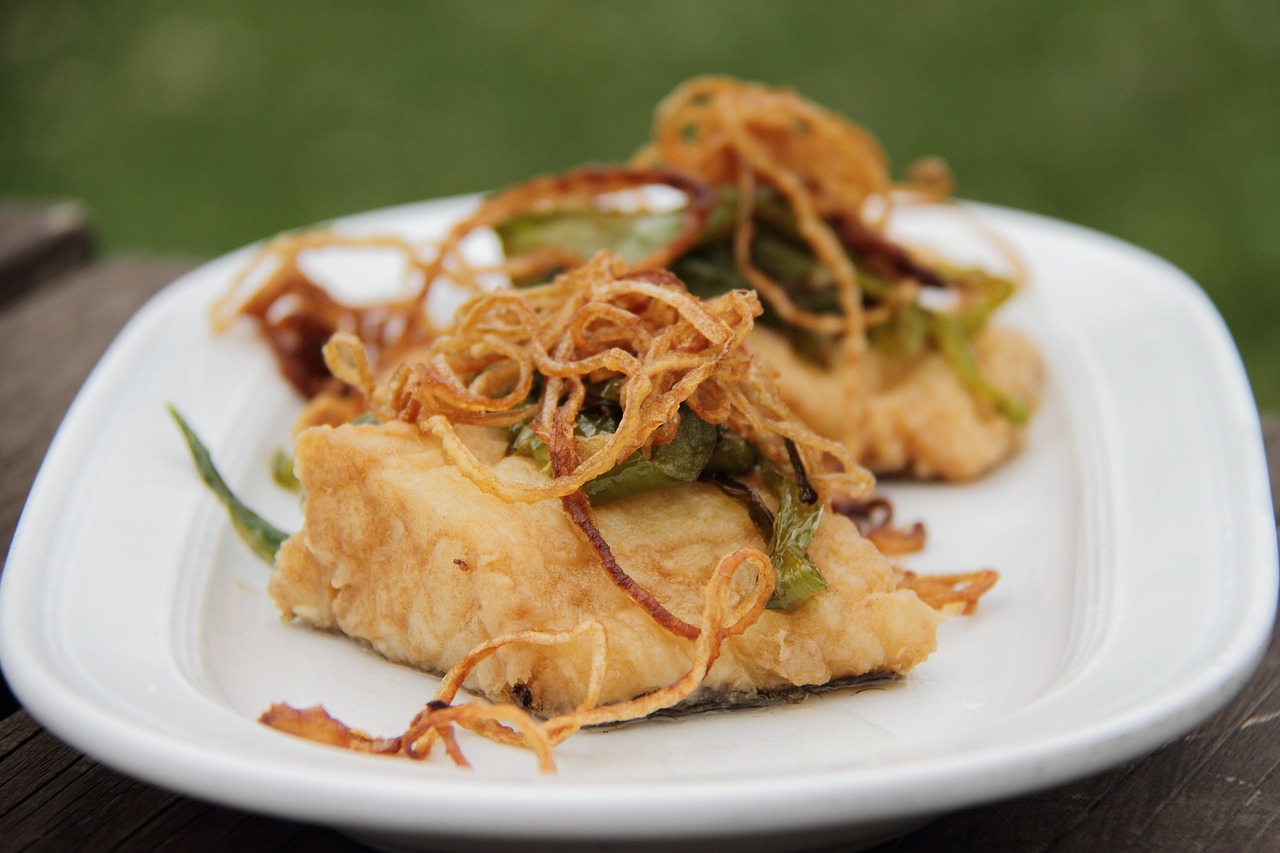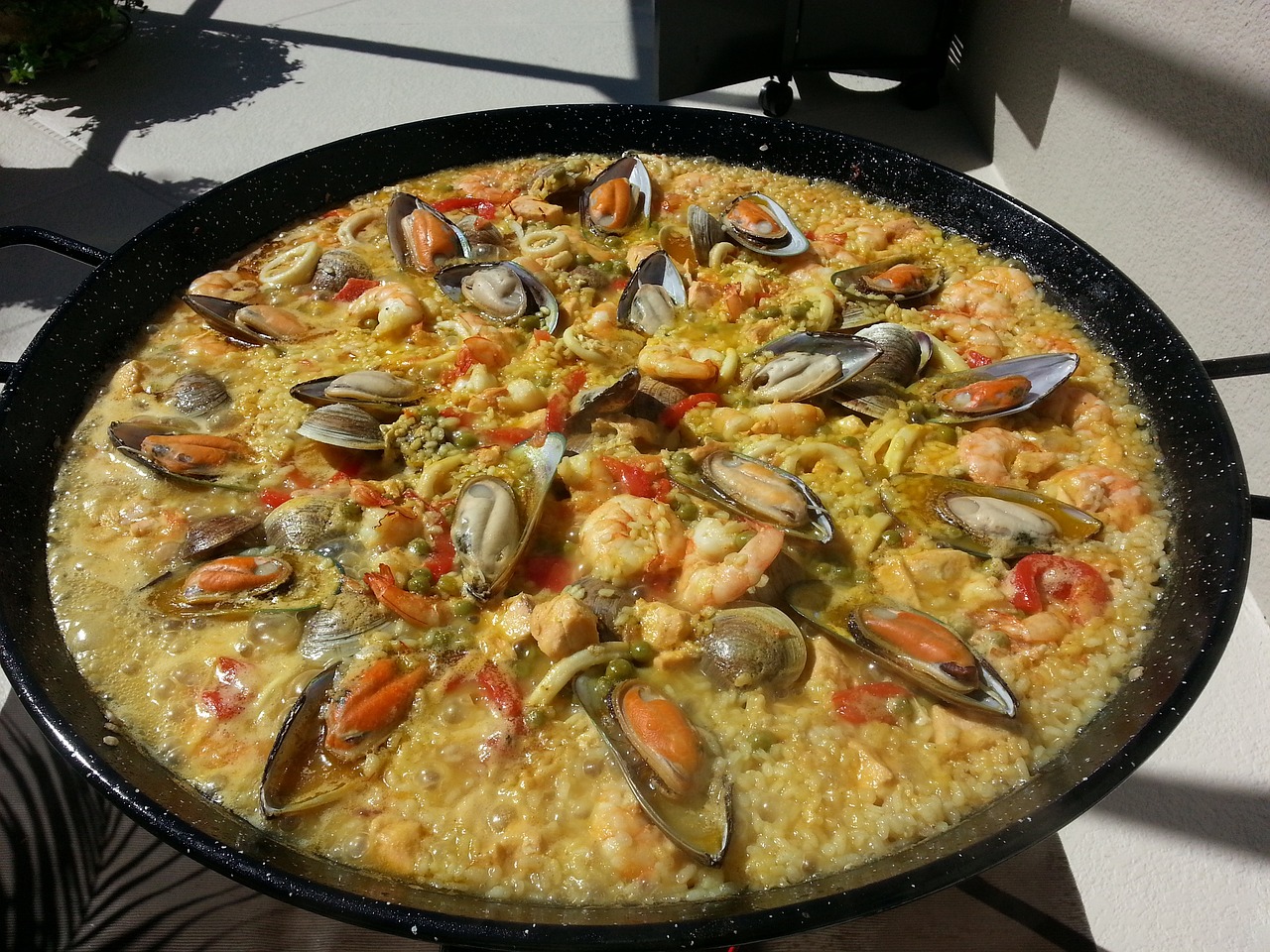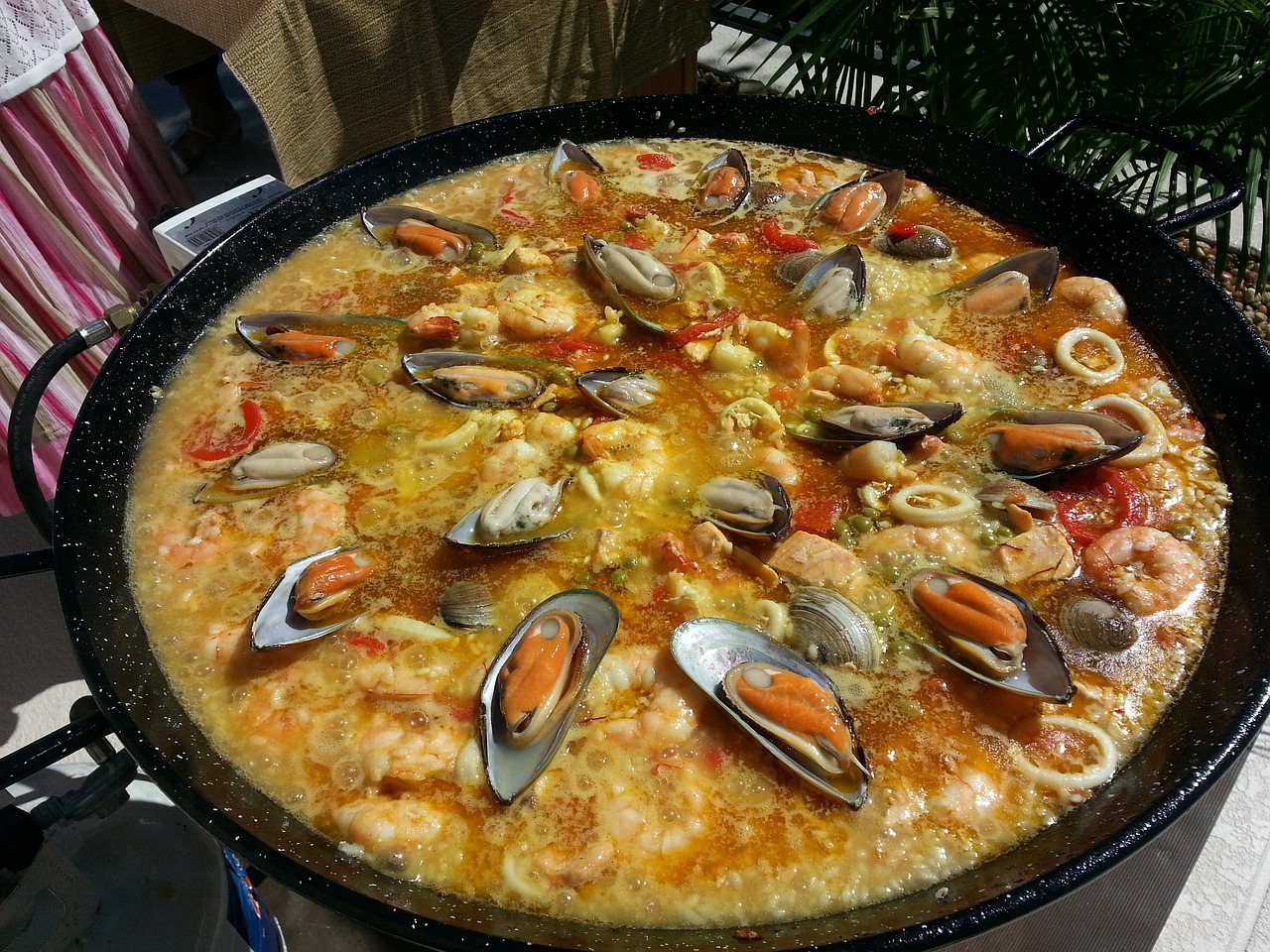Spanish Seafood Soup (Sopa de Mariscos)

Exploring the rich and flavorful traditional Spanish dish, Sopa de Mariscos, a beloved seafood soup that captures the essence of Mediterranean cuisine with its aromatic broth and fresh seafood ingredients.
Ingredients Used
When it comes to creating the flavorful and aromatic Spanish Seafood Soup, Sopa de Mariscos, the key lies in the selection of high-quality ingredients that come together to form a harmonious and delicious dish. Let's dive into the essential components that give this traditional Spanish soup its distinctive taste and character.
1. **Seafood:** At the heart of Sopa de Mariscos are a variety of fresh seafood ingredients that infuse the soup with a rich and briny flavor. Common seafood used in this dish includes succulent shrimp, plump mussels, tender fish fillets, and sometimes even squid or octopus for added depth of taste.
2. **Aromatic Vegetables:** To build a flavorful base for the soup, aromatic vegetables such as onions, garlic, tomatoes, and bell peppers are sautéed to release their natural sweetness and depth of flavor. These vegetables not only enhance the taste but also add a colorful and vibrant element to the dish.
3. **Herbs and Spices:** Aromatic herbs and spices play a crucial role in elevating the taste profile of Sopa de Mariscos. Ingredients like fresh parsley, bay leaves, paprika, and saffron are commonly used to add layers of complexity and a hint of warmth to the soup.
4. **Broth:** The base of the soup is typically a flavorful broth made from a combination of fish stock, white wine, and sometimes a splash of brandy for a luxurious touch. This broth serves as the foundation of the soup, infusing it with a deep seafood flavor that ties all the ingredients together.
5. **Seasonings:** To enhance the overall taste of the soup, seasonings such as salt, pepper, and a squeeze of fresh lemon juice are added towards the end of the cooking process. These final touches help balance the flavors and brighten up the dish.
By carefully selecting and combining these essential ingredients, you can create a bowl of Sopa de Mariscos that is not only delicious but also a true reflection of the vibrant and diverse culinary heritage of Spain.
Preparation Method
When it comes to preparing the traditional Spanish seafood soup, Sopa de Mariscos, attention to detail is key to achieving a rich and flavorful dish that truly captures the essence of Mediterranean cuisine. The preparation method involves a series of steps that bring together the diverse ingredients in perfect harmony, resulting in a delightful culinary experience.
To start the preparation process, gather all the key ingredients that form the heart of Sopa de Mariscos. This includes a variety of fresh seafood such as succulent shrimp, plump mussels, and tender fish, along with aromatic vegetables like onions, garlic, and tomatoes. Additionally, flavorful herbs and spices such as parsley, saffron, and paprika are essential for enhancing the taste profile of the soup.
Once you have assembled all the necessary ingredients, the next step is to clean and prep the seafood. Ensure that the shrimp and mussels are thoroughly cleaned and deveined, while the fish is cut into bite-sized pieces. This meticulous preparation ensures that the seafood retains its natural flavors and textures when added to the soup.
After preparing the seafood, it's time to sauté the vegetables in a large pot or Dutch oven. Start by cooking the onions and garlic until they are soft and translucent, then add the tomatoes and other vegetables to create a flavorful base for the soup. The combination of aromatic vegetables forms the foundation of the broth, infusing it with depth and complexity.
Once the vegetables are sautéed to perfection, it's time to add the seafood to the pot. Carefully place the shrimp, mussels, and fish into the simmering broth, allowing them to cook gently until they are tender and cooked through. Be mindful not to overcook the seafood, as it can become rubbery and lose its delicate texture.
As the seafood simmers in the fragrant broth, the flavors meld together to create a harmonious blend of tastes and aromas. The final step in the preparation method is to season the soup with a generous amount of fresh herbs and spices, adjusting the seasoning to taste. A sprinkle of fresh parsley or a pinch of saffron can elevate the dish to new heights of flavor.
Once the Sopa de Mariscos is fully prepared, serve it hot in bowls, garnished with additional herbs and a drizzle of olive oil for a finishing touch. This seafood soup can be enjoyed on its own as a comforting meal or paired with crusty bread for a satisfying dining experience that transports you to the sun-kissed shores of Spain.
Regional Variations
When it comes to Sopa de Mariscos, the regional variations found throughout Spain add a delightful twist to this beloved seafood soup. Each region puts its unique stamp on the dish, incorporating local ingredients and culinary traditions to create a diverse array of flavors and textures. Let's take a culinary journey across Spain to explore some of the fascinating regional variations of Sopa de Mariscos:
- Andalusia: In the southern region of Andalusia, Sopa de Mariscos is often enriched with the flavors of saffron and sherry, giving the soup a rich and aromatic profile. Local seafood such as prawns and clams are commonly used, reflecting the region's vibrant coastal cuisine.
- Catalonia: Moving to the northeastern region of Catalonia, Sopa de Mariscos takes on a slightly different character. Here, the soup may feature a tomato-based broth infused with garlic and parsley, creating a bright and tangy flavor profile. Catalan chefs often include lobster or crab in their version of the dish, adding a touch of luxury.
- Galicia: In the northwest region of Galicia, known for its fresh seafood, Sopa de Mariscos showcases the bounty of the Atlantic Ocean. This variation of the soup typically includes a medley of shellfish such as mussels, scallops, and cockles, simmered in a savory broth flavored with paprika and bay leaves.
Each regional variation of Sopa de Mariscos offers a unique glimpse into the culinary heritage of Spain, highlighting the diverse ingredients and cooking techniques that define each area. Whether you prefer the bold flavors of Andalusia, the vibrant notes of Catalonia, or the seafood abundance of Galicia, there's a version of this iconic soup to suit every palate. So, next time you sit down to enjoy a steaming bowl of Sopa de Mariscos, savor the flavors of Spain's different regions and let your taste buds take a delicious journey across the country.
Serving and Pairing
When it comes to serving and pairing Sopa de Mariscos, the possibilities are as diverse as the flavors in the soup itself. This delectable seafood dish can be enjoyed in various ways to suit different preferences and occasions. Let's dive into some exciting serving and pairing options to elevate your dining experience:
- Serving Suggestions:
- 1. **As a Main Course:** Sopa de Mariscos shines as a hearty and satisfying main course. Serve generous portions in bowls, allowing the rich broth and seafood to take center stage.
- 2. **With Crusty Bread:** A side of crusty bread is a perfect companion to soak up the flavorful broth. It adds a delightful texture and complements the soup beautifully.
- 3. **Accompanied by a Side Salad:** Balance the richness of the soup with a fresh side salad. The crisp greens and tangy dressing provide a refreshing contrast to the warm and savory flavors of Sopa de Mariscos.
Pairing this Spanish seafood delight with the right beverage can further enhance the dining experience. Here are some fantastic pairing options:
- Pairing Choices:
- 1. **Spanish Wine:** A glass of Spanish wine, such as a crisp Albariño or a fruity Tempranillo, complements the seafood flavors of the soup. The acidity and complexity of Spanish wines elevate the dining experience.
- 2. **Citrusy Beer:** A citrus-infused beer, like a Belgian Witbier or a Hefeweizen, can be a refreshing choice to enjoy alongside Sopa de Mariscos. The citrus notes in the beer harmonize well with the seafood and herbs in the soup.
- 3. **Sparkling Water:** For a non-alcoholic option, sparkling water with a squeeze of lemon or lime can cleanse the palate between bites, allowing you to fully savor the intricate flavors of the soup.
Whether you prefer a classic pairing or wish to experiment with new combinations, the key is to enhance the flavors of Sopa de Mariscos and create a memorable dining experience. So, get creative with your serving and pairing choices to enjoy this traditional Spanish seafood soup to the fullest!



 HazalVardal
HazalVardal 





